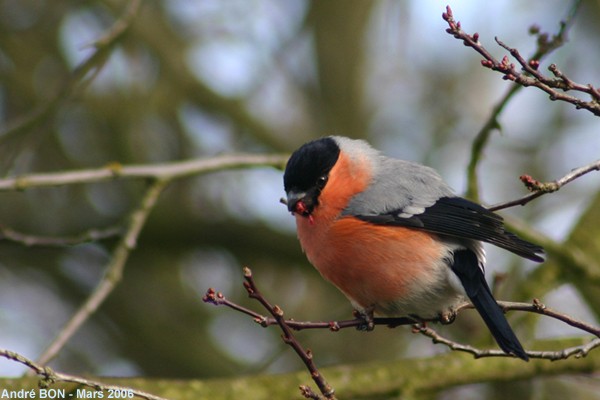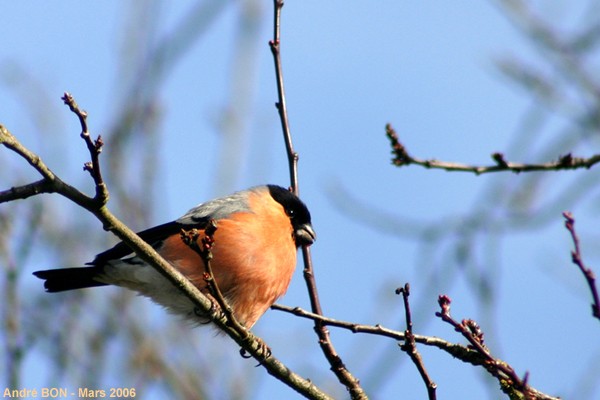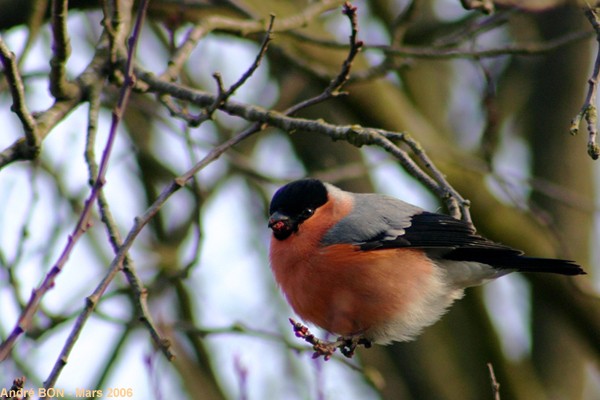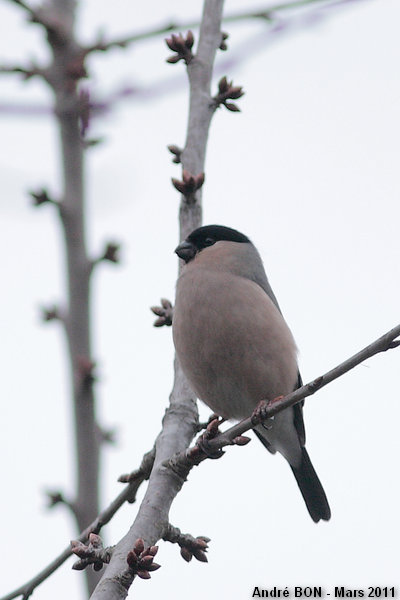



| Eurasian Bullfinch (Pyrrhula pyrrhula (Linnaeus, 1758)) |




|
|
Scientific name: Pyrrhula pyrrhula (Linnaeus, 1758) Common name: Eurasian Bullfinch French name: Bouvreuil pivoine Order: Passeriformes Family: Fringillidae Size: 15 to 16 cm, 26g. Habitat: Mountain forests (conifers and mixed woodlands), parks, hedgerows, gardens and orchards. Food: Buds, seeds on trees and bushes, or if missing, seeds in grasslands. Nesting: The female lays 4 or 5 eggs between late April and July. The male feeds the female while it is sitting on the eggs. There can be 3 broods per year. Migration: Sedentary. Birds from central and northern Europe move westwards and southwards each winter. Geographic area: Europe, missing in southern Spain and in northern Scandinavia. Temperate Asia. |
The male has a red or bright pink underside and a greyish blue upper side. The cap and the chin are black. The Eurasian Bullfinch has a short thick black bill and a white rump. Females differ from males by the greyish pink underside. |
| [To know more about the Eurasian Bullfinch] [Next picture] [Top] |

|
A small folk of Eurasian Bullfinches came to eat buds in front of the window of my garage. There were 4 males and 1 female. I could not take a picture of the female. |
| [To know more about the Eurasian Bullfinch] [Next picture] [Previous picture] [Top] |

|
I used the window ledge as a support to avoid moving blur. Maybe tipsy because of the eaten buds, the Bullfinches didn't pay attention to me. |
| [To know more about the Eurasian Bullfinch] [Next picture] [Previous picture] [Top] |

|
I only see Eurasian Bullfinches, in my garden, 4 or 5 times per year. |
| [To know more about the Eurasian Bullfinch] [Previous picture] [Top] |

|
I had not observed any Eurasian Bullfinch in the region since 2006. This picture shot in March 2011 is marking the beginning of a series of regular observations of this beautiful bird in my garden. Here is a female with its greyish pink plumage on the underside of the body. |